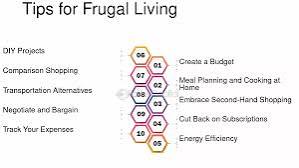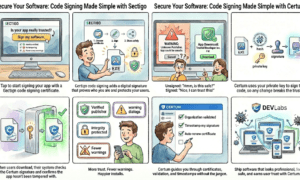Frugality isn’t about never spending money. It’s about making intentional choices so each dollar you spend reflects your priorities and values. By adopting a few simple strategies, you can trim expenses, reduce financial stress, and build a more secure future. In this article, we’ll delve into practical Frugal Living Tips that help you save money in ways that feel empowering, not restrictive.
1. Understanding the Value of Frugal Living
Frugal living is often misunderstood as extreme cost-cutting or constant denial of life’s pleasures. In reality, it’s a balanced approach that helps you:
- Prioritize Your Goals: Instead of spending impulsively, you channel your money into areas that truly matter—like debt repayment, investing, or experiences that enrich your life.
- Reduce Waste: By buying less and focusing on quality over quantity, you help minimize unnecessary consumerism and the environmental impact of overconsumption.
- Alleviate Stress: Financial worries can be exhausting. Strategically managing expenses can help you build an emergency fund or pay bills on time, easing day-to-day anxiety.
When you understand that frugality is about mindful spending rather than deprivation, it becomes a tool for greater financial freedom and happiness.
2. Evaluating Your Current Spending
Before you can improve your financial habits, you need to have a clear picture of where your money goes.
- Track Your Expenses: Use a budgeting app, a spreadsheet, or a simple notebook. Over the course of a month, write down every purchase—from groceries to streaming services—to see patterns you may not have noticed.
- Separate Wants from Needs: Take a close look at each expense. Is it necessary (like rent, utilities, or insurance)? Or is it a luxury (like multiple subscription services or frequent takeout)? This distinction helps you spot areas where you can cut back.
- Set Realistic Goals: Perhaps you want to pay off a specific debt or save for a significant purchase. Knowing your “why” keeps you focused and motivated to make consistent changes in your spending habits.
3. Simple Ways to Cut Costs
Once you’ve evaluated where your money goes, it’s time to consider straightforward methods for reducing expenses.
- Cook at Home: Eating out or ordering in can quickly drain your bank account. Preparing meals in batches and planning weekly menus can save substantial sums each month.
- Buy Generic: Many store-brand products are comparable to name-brand items but cost significantly less. Try swapping out a few products to see where you can comfortably save.
- Negotiate Bills: From car insurance to cable, you often have more room to negotiate than you might think. A quick phone call asking for a better rate can lead to surprising savings.
- Cut Down on Subscriptions: Evaluate which monthly services you truly use. If you can live without certain streaming platforms, gym memberships, or box subscriptions, cancel or pause them.
4. Tips for Home Efficiency
Your home can either be a money pit or a place to maximize savings. Here are strategies to ensure it’s the latter:
- Optimize Energy Use: Use LED bulbs, unplug devices when they’re idle, and invest in power strips that make it easy to switch off multiple gadgets at once. Small steps can lead to noticeable decreases in electricity bills.
- Insulate and Seal: Drafty windows and doors force your heating and cooling systems to work harder. Proper insulation and weather-stripping can significantly lower energy costs while keeping your home comfortable.
- DIY Repairs: Instead of calling a professional for small household fixes, try tackling them yourself. You can find plenty of tutorials online for tasks like painting, basic plumbing, and simple carpentry.
- Conserve Water: Install low-flow showerheads, fix leaks promptly, and only run the washing machine or dishwasher with full loads. Reducing water waste benefits both the planet and your wallet.
5. Smart Shopping Techniques
Frugal shopping doesn’t mean you avoid buying altogether—it means being strategic about what, when, and how you purchase.
- Use a List: Whether you’re grocery shopping or picking up household items, a written (or app-based) list helps you avoid impulsive buys.
- Buy in Bulk Wisely: Non-perishable items like rice, pasta, beans, and canned goods often cost less per unit when bought in larger quantities. Just be sure you have sufficient storage and will use them before they expire.
- Look for Sales and Coupons: Some stores rotate deals weekly. Keep an eye out for sales and combine them with coupons to maximize savings. But only purchase what you genuinely need, rather than stocking up on items you won’t use.
- Comparison Shop: Check prices online and in-store to ensure you’re getting the best deal. Sometimes, waiting a day or two can reveal better offers or discounts, and it also helps curb impulse purchases.
6. Entertainment on a Budget
Living frugally doesn’t mean giving up on fun. You can still enjoy enriching experiences while keeping costs low.
- Leverage Free Events: Many communities host free concerts, art shows, and outdoor festivals. Keep an eye on local websites, social media groups, or community boards for upcoming events.
- Explore Nature: Hiking, picnics, and nature photography are low-cost or free ways to unwind and stay active. Local parks and trails can provide hours of entertainment without a hefty admission fee.
- DIY Movie Nights: Instead of going to the cinema, stream a movie at home with homemade popcorn. Consider rotating movie-night hosting duties with friends to keep things interesting.
- Use the Library: Modern libraries offer much more than books, including free access to e-books, audiobooks, movie rentals, and even community events.
7. Expanding Your Knowledge Base
As you adopt a frugal mindset, continue learning from others who’ve successfully cut costs and improved their financial lives. You can find practical examples and strategies in blogs, podcasts, and online forums. One particularly helpful resource is this collection of
Frugal Living Tips, which offers innovative ways to save money—some of which you might not have considered yet. Regularly exploring new ideas and success stories can spark motivation and keep you on track.
8. Maintaining Long-Term Frugality
Embracing frugality is easier when you approach it as a lifestyle rather than a temporary fix. To ensure lasting success:
- Automate Savings: Once you set a monthly budget, automate transfers to your savings or investment accounts. When the process is automatic, you won’t have to rely on willpower alone.
- Stay Accountable: Share your goals with a friend or family member who can encourage you when you feel tempted to overspend. Online communities can also provide invaluable support and fresh ideas.
- Adjust as Needed: Your life circumstances will change—perhaps you’ll move, start a family, or shift careers. Revisit and revise your budget periodically to reflect these changes.
- Celebrate Milestones: Recognize and reward yourself when you reach specific goals, such as paying off a credit card or building a three-month emergency fund. Small rewards can help you stay motivated for the long haul.
9. Conclusion
Frugal living is about mindful spending that helps you meet your financial goals while ensuring you don’t feel deprived. By evaluating your current expenses, making simple changes at home, shopping strategically, and exploring budget-friendly entertainment options, you can make room for what truly matters in your life—be it travel, hobbies, or securing your family’s future.
Remember, frugality is a journey. It may take time to adjust your habits and discover the best ways to save that fit your unique lifestyle. However, each step forward—no matter how small—brings you closer to reduced financial stress and greater peace of mind. By continuously learning from resources and being open to new strategies, you’ll find that living below your means doesn’t limit you; instead, it empowers you to focus on what genuinely enriches your life.





























